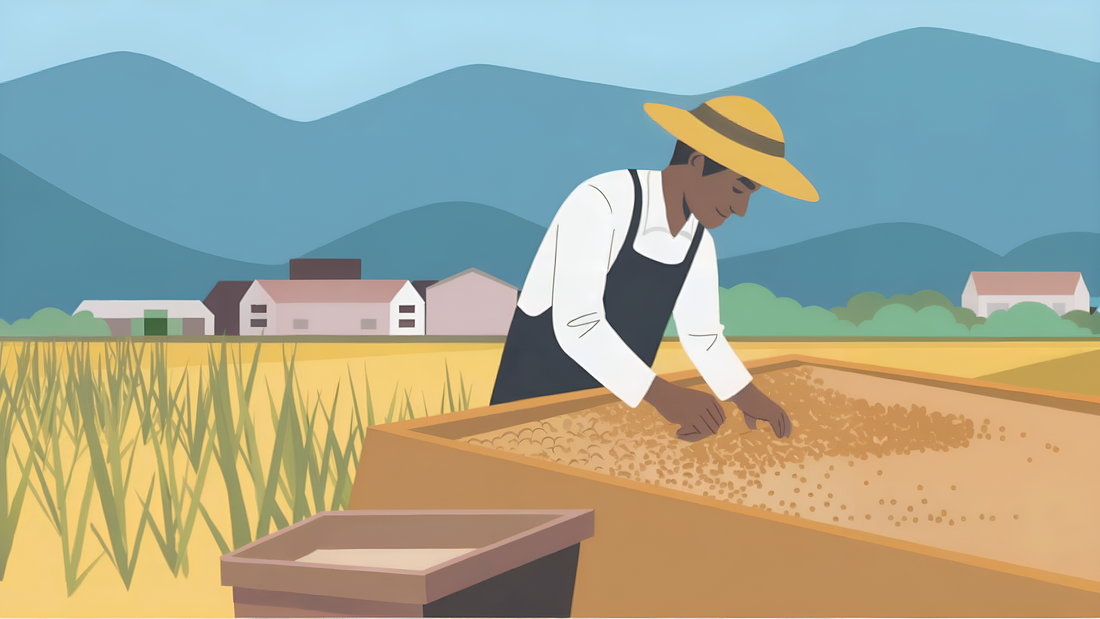
The Process of Making Buckwheat Tea
Share
Buckwheat Tea Is the Underrated Hero of Your Kitchen
Forget green tea, matcha, or whatever overpriced “superfood” latte is trending on TikTok this week. Buckwheat tea is here to blow your mind—and no, it’s not just for your health-nut friend who lectures you about antioxidants.
Himalayan Tartary Buckwheat tea, also known as memil-cha (메밀차) in Korea, soba-cha (そば茶) in Japan, and kuqiao-cha (苦荞茶) in China, is made from roasted buckwheat seeds, and it’s basically comfort in a cup. Warm, nutty, and a little toasty, it tastes like your grandma’s cookies—if your grandma swapped sugar for a wholesome vibe.
How It’s Made: A Field-to-Cup Journey Worth Sipping
Step 1: Buckwheat, the Overachiever
Imagine a plant that laughs in the face of bad soil and weather tantrums. That’s buckwheat for you. Grown in places like Southwestern China, it’s a resilient little powerhouse that doesn’t just survive—it thrives. Buckwheat isn’t some delicate crop you have to baby like avocado trees.
It matures quickly, goes through life like a boss, and when the time’s right, the groats (those magical seeds that make the tea) are harvested with the kind of care usually reserved for picking diamonds. This is where the story begins—on a field with dirt underfoot and hard-working hands ensuring no groat gets left behind.
Step 2: Cleaning and Sorting: No Junk Allowed
Once harvested, the buckwheat gets the spa treatment. Dirt? Gone. Random debris? Tossed. This is where things get real because no one’s signing up for a cup of tea that tastes like the barn it came from.
After the deep clean, the sorting process is like casting for a movie—only the most photogenic and perfect groats make it to the next stage. It’s brutal, sure, but hey, excellence requires standards.
Step 3: Grind Time
Grinding is where the magic starts. Those humble groats? This is their glow-up moment. The grinding process doesn’t just crush seeds; it unleashes their soul—natural oils, rich aromas, and the base notes of that nutty, toasty flavour we all know and love. Think of it as unlocking the inner diva of each groat. This step sets the stage for the flavours to come alive when hot water hits them.
Step 4: Roast It Like You Mean It
Now for the moment of transformation: roasting. This isn’t just some half-hearted toss into a machine. Roasting is an art—a carefully controlled process where the groats are heated just enough to tease out their nutty, almost caramel-like notes.
The result? A tea that tastes like a hug in a mug, perfect for winter mornings or whenever life feels just a little too much. It’s not trying to be herbal or zen—it’s bold, unapologetic, and warm, like your favourite cozy sweater.
Step 5: Packaging It Up, Nice and Fresh
The final step is sealing the deal—literally. The tea is packed with all that fresh aroma locked inside, ready to travel from the fields to your doorstep. By the time it lands in your kitchen, it’s primed to be brewed and savoured.
You don’t have to think about the journey it’s been on, but trust me, your cup will taste better knowing it’s come a long way to be this good. Once packaged, buckwheat tea finds its way to various destinations, including specialty tea shops, health food stores, or online platforms.
Why You Should Care
Here’s the thing: buckwheat tea isn’t here to join the green tea or matcha cliques. It’s doing its own thing—quietly packing a punch with B vitamins, magnesium, and antioxidants like rutin. That stuff fights stress, supports glowing skin, and even gives your immune system a little pep talk.
So, yeah, it tastes like a warm cookie, but it’s also legit good for you. Forget chasing trends. Go for the underdog that delivers every time. Grab a bag of May Nights Buckwheat Tea and find out why it’s the cozy season MVP.